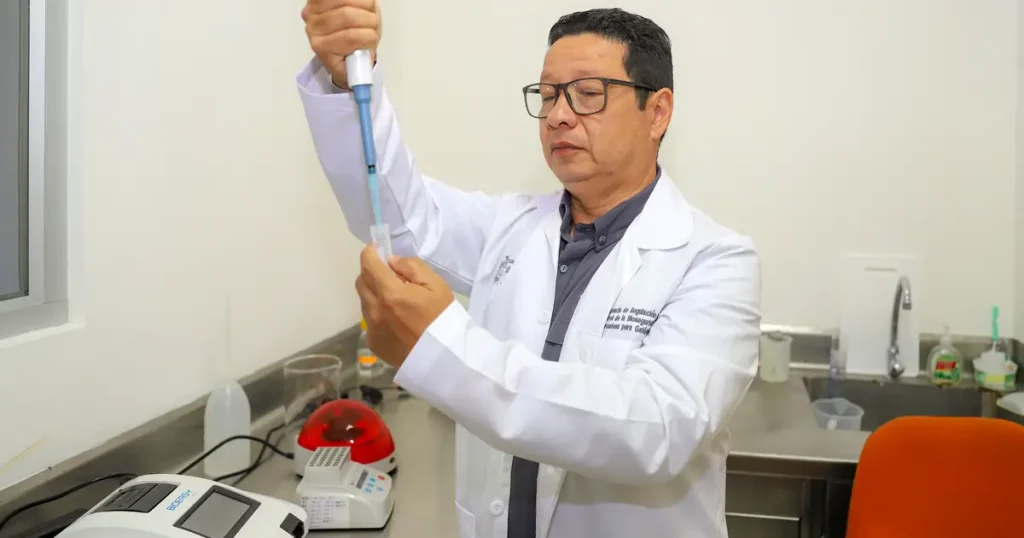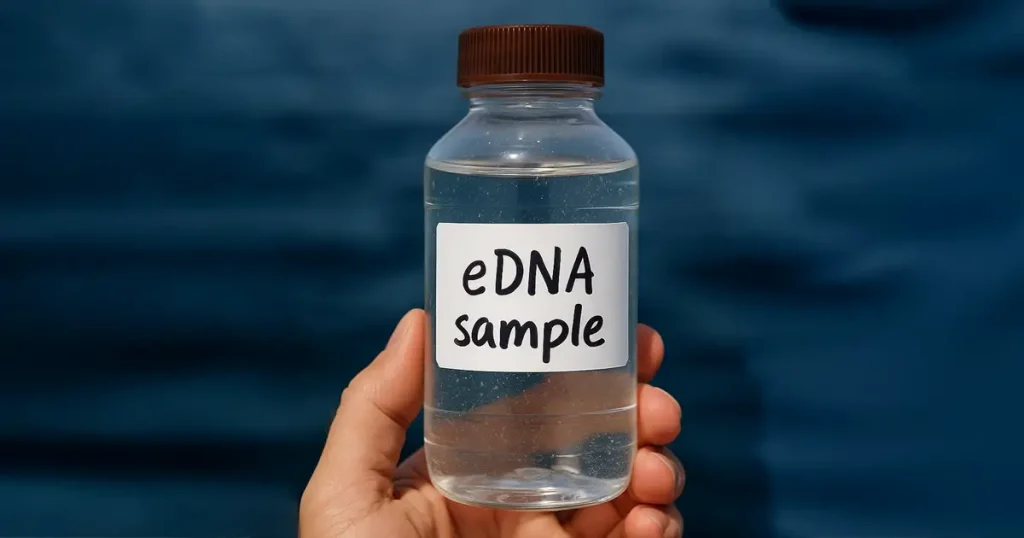Project Isabela
The goal of Project Isabela, initiated in 1997 and completed in 2006, was to eliminate large introduced mammals from northern Isabela Island (approximately 250,000 ha), Santiago Island (58,465 ha), and Pinta Island (5940 ha). The project began in response to the massive ecosystem-wide destruction caused by introduced goats on Alcedo Volcano on northern Isabela. At the start Project Isabela, the goat population on northern Isabela was estimated at 100,000 animals. Eradication work began on the smallest of the islands – Pinta – which was used as a training ground, then shifted to Santiago prior to the arrival of helicopters, which were essential for work to begin on northern Isabela.
Milestones
- 1995: Tortoise Summit. A summit, organized by the Charles Darwin Foundation (CDF) in the UK, focused on the goat population explosion on northern Isabela and the impact on the tortoise population. The group concluded that an aggressive, ecosystem-wide approach was needed, with new eradication technologies. In October 1995, the “Campaign to Save Alcedo” was launched.
- 1997: International workshop. This workshop resulted in the Project Isabela Plan. The project was developed as a bi-institutional project of the CDF and the Galapagos National Park Directorate (GNPD). Goals included the eradication of goats and donkeys from northern Isabela; pigs, goats, and donkeys from Santiago Island; and goats from Pinta Island.
- 1999: Initiation of the Pinta phase of the Project. Goat eradication of Pinta was used to test new methodologies and train the team for the large-scale work on Isabela.
- 2000: The Global Environment Facility (GEF), a strategic partnership of the United Nations Development Program (UNDP), the United Nations Environment Program (UNEP), and the World Bank, approved a six-year, $13.3 million initiative to fund invasive species work in Galapagos, with Project Isabela as the primary focus.
- 2000: Last pig was eliminated on Santiago. More than 18,000 pigs were removed during the Santiago pig program begun more than a decade before Project Isabela. Santiago Island was declared pig-free in 2004.
- 2001: Goat eradication initiated on Santiago Island. Santiago was used as a second, larger trial area prior to attempting goat eradication on northern Isabela. Work began with ground hunting.
- 2003: Pinta declared goat-free.
- 2004: Last donkey eliminated on Santiago.
- 2004: Aerial hunting for goats began on Santiago. Judas goats (described below) were released on parts of Santiago by the end of the year: eventually more than 200 were used on Santiago.
- 2004: Ground hunting begun on Isabela, followed soon after by aerial hunting. During the first seven months, more than 55,000 goats were eliminated, and donkeys were eradicated. The first Judas goats (described below) were released by the end of 2004. In all, some 770 Judas goats were used on Isabela.
- 2005: Last feral goat removed from Santiago.
- 2005: Last feral goat removed from northern Isabela. Approximately 20-30 goats remained in southern Isabela.
- 2006: Santiago declared free of all large introduced mammals – goats, pigs, and donkeys. Approximately 20 Judas goats remained for monitoring purposes.
- 2006: Northern Isabela declared goat-free. All field operations ended; 266 Judas goats remained on Isabela for monitoring purposes.
Overview
The giant tortoises on Alcedo Volcano provided the catalyst for Project Isabela. In the 1970s, goats, introduced to southern Isabela by whalers and other mariners, finally managed to cross the hostile terrain of the Perry Isthmus — 12 kilometers of rough a’a lava separating southern and northern Isabela. Within 10-15 years of their arrival on the southern slopes of Alcedo Volcano, the goat population exploded, causing massive ecosystem degradation.
The destruction was most evident on the southern rim of Alcedo, a vital gathering place for giant tortoises during the cool, dry, garúa season. The dense forests on the rim provided much needed shade. Thick garúa mists drifted up the outer slopes of the volcano, became trapped in the many epiphytes living on the trees, then dripped to form shaded pools, vital for tortoises during the dry season. By the early 1990s, the goats had destroyed the forest and thus eliminated the shade and water supply so vital to the giant tortoises. Other native and endemic species, including birds, insects, and plants, were also negatively impacted. The goat population continued to expand to the more northern volcanoes, Darwin and Wolf.
In 1997 the Charles Darwin Foundation (CDF) and the Galapagos National Park Directorate (GNPD) held an international workshop of experts to determine the feasibility of eradicating the goats on northern Isabela. Prior to 1997, the largest island with a successful goat eradication was Auckland Island in New Zealand (49,975 ha), where only 105 goats occupied a mere 4000 ha. The next two largest islands with successful goat eradications were Lanai in Hawaii (35,000 ha, unknown size of goat population) and San Clemente Island in California (14,800 ha with approximately 29,000 goats).
The concept and plan developed at the workshop became the largest, most ambitious ecosystem restoration project in a protected area worldwide. Successful removal of all large, introduced mammals from Pinta, Santiago, and northern Isabela would allow for the reestablishment of natural ecological conditions and evolutionary processes.
Feral goats are particularly devastating to island ecosystems, causing ecosystem degradation primarily through overgrazing, destruction of forests, and causing erosion. First introduced in Galapagos in the 1800s, goats were eventually released onto 13 islands. By 1997, they had been eradicated on five of the smaller islands. At the start of Project Isabela, goats were still found on Pinta, Santiago, the five islands with human habitation, and a small islet off the west coast of Isabela.
Beginning in 1997, professional training of a team of highly skilled Galapagos park rangers began. By the end of the project, the team had become one of the best hunting and eradication teams worldwide. The work began on Pinta (goat eradication) and Santiago (goat, pig, and donkey eradication) Islands. Goat hunting began on northern Isabela in 2004. Cutting-edge technology at the time, including the use of helicopters for aerial hunting and GIS tracking, ensured swift and efficient removal of the feral goats. Data management became as critical for the hunters as marksmanship skills. As goats are social animals, sterilized Judas goats, fitted with radio collars and then released into the population, would seek out the remaining feral goats, allowing them to be located through radio telemetry and then eliminated.
By 2006, goats were gone from Pinta, Santiago, northern Isabela, and only a few remained on southern Isabela. Donkeys were eliminated on Santiago and Alcedo Volcano (the only places on the three islands they occurred). And pigs were gone from Santiago.
As the goat populations declined, the vegetation underwent an amazing recovery. Small trees began regenerating from the stumps left by the goats. Highland shrub species, forest tree seedlings, Opuntia cactus, and other endemic species increased in number. Scientists found several species that had previously been restricted to protected craters and fenced enclosures where they were protected from goats. Galapagos rails were once again abundant in the highlands. An unfortunate result on Santiago was the expansion of introduced blackberry thickets throughout large portions of the highlands. Studies of methods to control this invasive species are ongoing.
Achievements of Project Isabela, in addition to the primary goal of eradication of feral goats, pigs, and donkeys, include:
- Improved inspection and quarantine system to prevent future introductions.
- Development and implementation of cost-effective methods of eradicating, controlling, and mitigating the impact of invasive species, which has since been used and will continue to be used on other islands and for other species.
- Built capacity for eradication programs and for applied research to better understand the nature of current and future threats of invasive species, and to plan mitigation efforts.
- Enhanced awareness in the local community and on the mainland regarding the challenge and importance of ecological restoration efforts and the long-term management of invasive species.
- Established model for integrated conservation, with close collaboration between scientists and resource managers.
- Model for effective planning workshops to develop operational plans for conservation action. Since Project Isabela, the workshop methodology developed has been used to develop plans for several priority projects, including but not limited to: Floreana mockingbird; rodent eradication; giant tortoise restoration; knowledge management; citizen science; landbird restoration; and control of the introduced Philornis fly.
Project Isabela received support from: Galapagos Conservancy, Galapagos Conservation Trust, Frankfurt Zoological Society, Friends of Galapagos Netherlands, Friends of Galapagos Switzerland, The Lutz Foundation, The Mars Foundation, Stephen L. Merrill, The Prospect Hill Foundation, The Stewart Foundation, Charles and Judy Tate, Kelly and Sandy Harcourt, Mr. and Mrs. Christopher Holdsworth Hunt, Mr. Peter Hurtley, Mr. and Mrs. James Teacher, and Project ECU/00G31/GEF-UNDP. The Project Isabela Planning Workshop in 1997 was funded by USAID/PL480, UNESCO, WWF, and Galapagos Conservancy.



